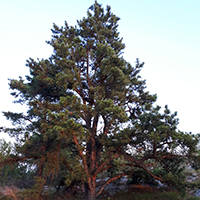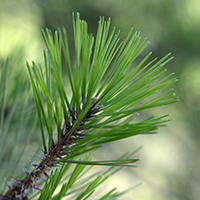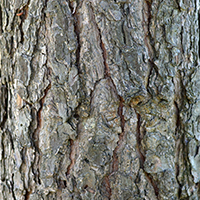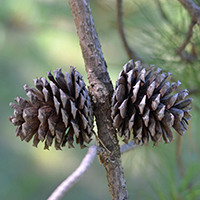What pitch pine looks like
Size and shape
- Reaches 20 metres high.
- Trunk reaches up to 60 centimetres in diameter.
Leaves
- Stiff, twisted yellowish-green needles with a blunt tip.
- Grow in bundles of 3 (7 to 12 centimetres).
Bark
- Reddish-brown and smooth when young.
- Becomes dark grey and furrowed with age.
Fruit
- Narrow and elliptical cones (5 to 9 centimetres) with thickened scales at the tip.
- Remain closed until opened by fire, but some will open at maturity.
Where pitch pine is found
Pitch pine is found in a small area of Eastern Ontario along the St. Lawrence River from Kingston to Brockville, and as far north as Charleston Lake Provincial Park.
What you need to know to grow pitch pine
- Moisture: grows best in moist, well-drained soils.
- Soil: typically grows on shallow soils over bedrock but tolerates many soil types.
- Shade: grows best in full sun.
- Caution: pitch pine has rigid, brittle wood. Heavy snowfall and winds can damage limbs.
Benefits and uses of pitch pine
Wildlife benefits
Pitch pine seeds and seedlings are a food source for birds and small mammals, including:
- warblers
- grosbeaks
- white-tailed deer
- cottontail rabbits
Porcupines eat pine pitch bark.
Commercial uses
Pitch pine wood contains a lot of resin and is rot resistant. It is currently used to make:
- turpentine
- rosin
- pulp and paper
- lumber
Historically, pitch pine wood was used in ship building and railroad ties.
Fun facts about pitch pine
- Pitch pine trees can live up to 200 years.
- Pitch pine is Ontario’s only native conifer with needles bundled in groups of 3.
- Pitch pine needles and cones can sprout directly from the trunk.
- Pitch pine trees are adapted to wildfire and can readily resprout if damaged from fire.
Updated: November 22, 2023
Published: July 18, 2014



